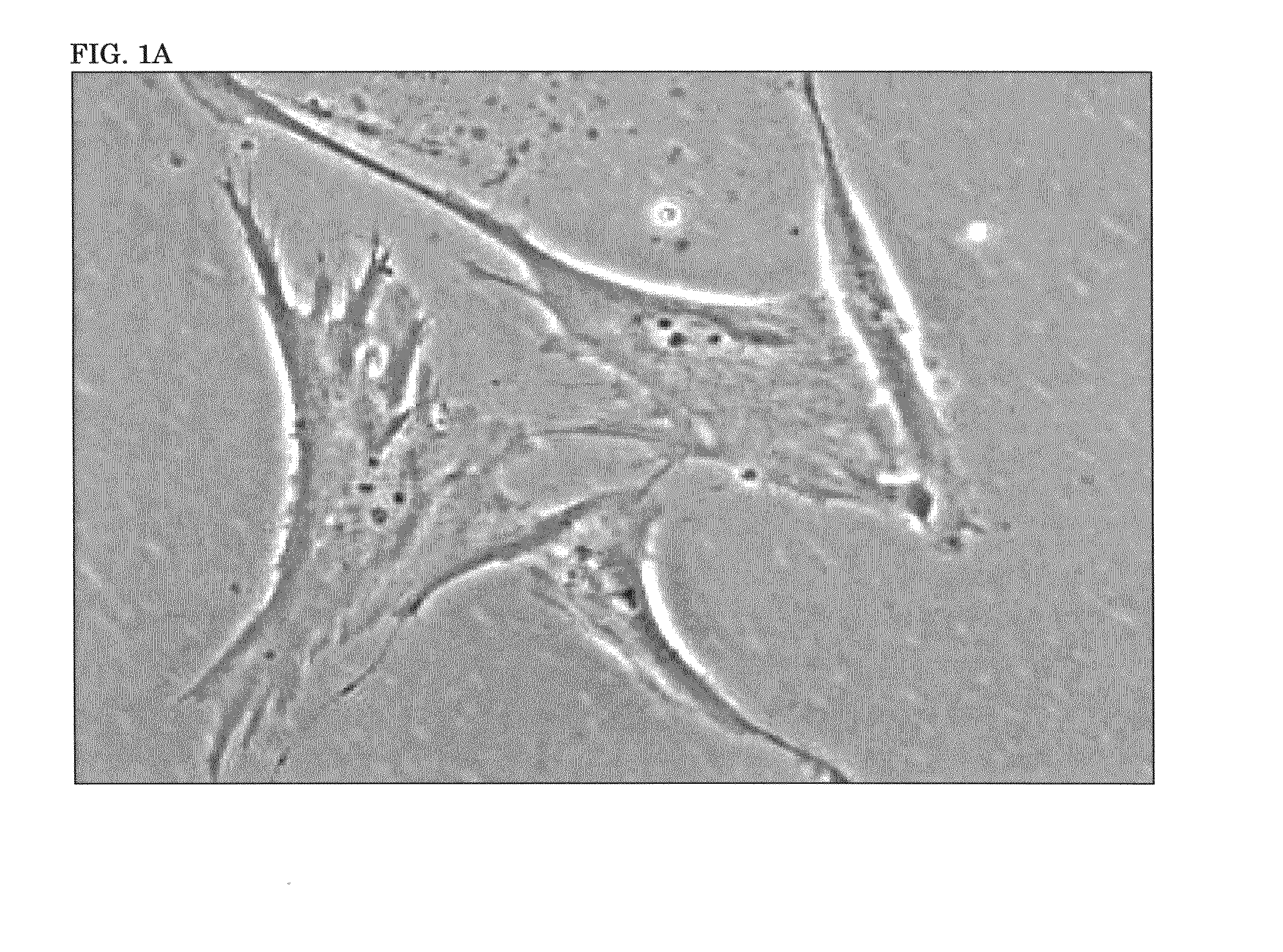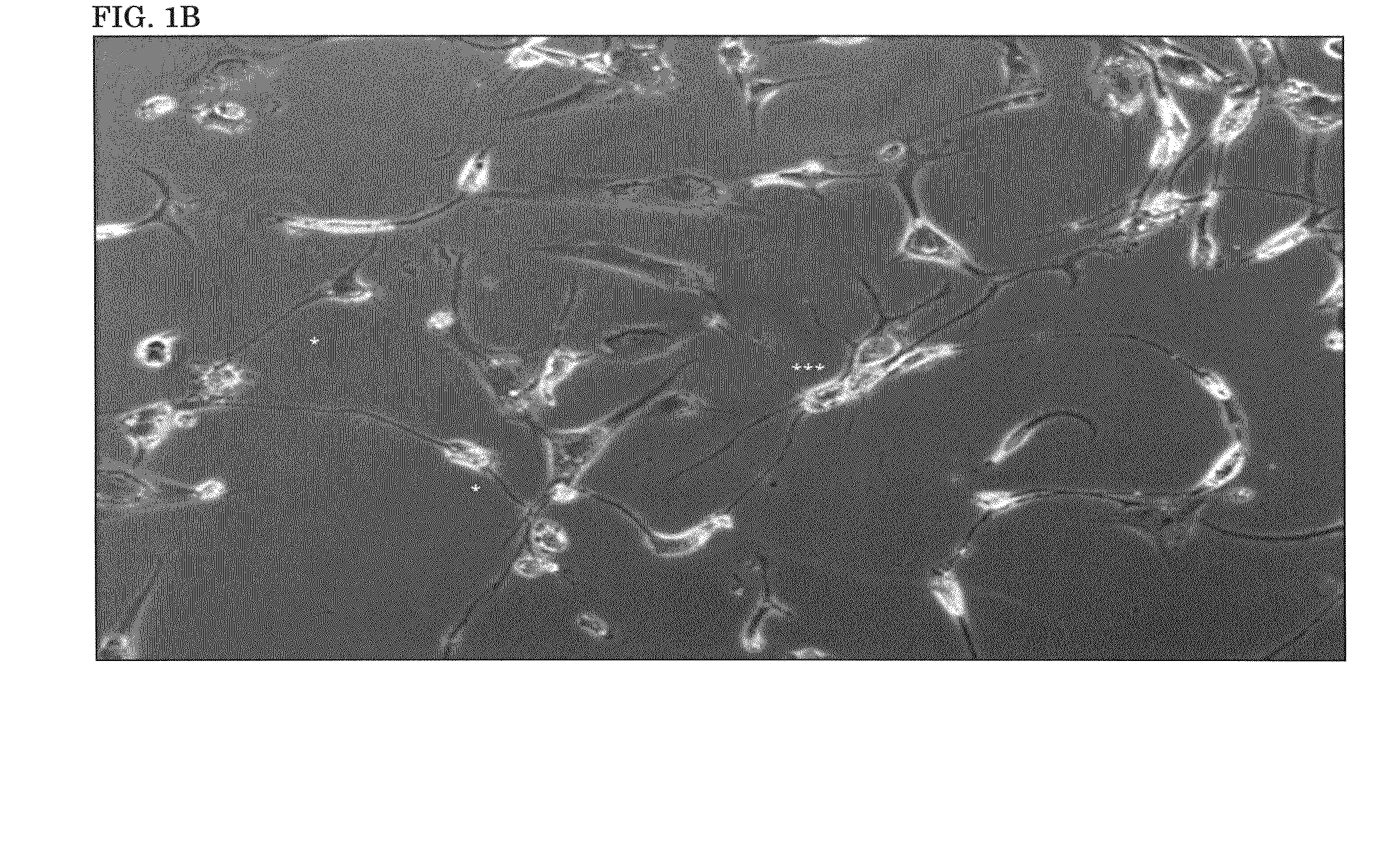Nutritional compositions containing a neurologic component and uses thereof
a neurologic component and nutritional composition technology, applied in the field of nutritional compositions, can solve problems such as limiting the entire pathway, and achieve the effect of promoting neurological health and promoting overall brain and nervous system health
- Summary
- Abstract
- Description
- Claims
- Application Information
AI Technical Summary
Benefits of technology
Problems solved by technology
Method used
Image
Examples
example 1
[0184]This example describes the neurogenesis of hADSCs by PE as compared to DHA and a negative control.
[0185]PE from bovine and plant was purchased from Matreya® (Cat.#1069) and (Cat.#1301) respectively. PE from bovine was diluted in 100% ethanol to 67.2 mM. PE from plant was diluted in 100% ethanol to 67.6 mM. These solutions were then stored at 4°-8° C.
[0186]hADSCs were purchased from Invitrogen, also known as Life Technologies, of Carlsbad, Calif., U.S.A., and were cultured as near confluent monolayers in 100 mm culture plates within a maintenance media consisting of Complete MesenPro RS medium with growth supplement and L-glutamine obtained from Invitrogen®. The process of culturing, passage, and seeding the hADSCs is described below.
[0187]The subculture of hADSCs was performed when cell culture reached confluence. To passage hADSCs, the following procedure is used: i) aspirate the Complete MesenPRO RS medium from the cells; ii) rinse the surface area of the cell layer with Dul...
example 2
[0197]This example describes the neurogenesis of hADSCs by sphingomyelin as compared to DHA and a negative control.
[0198]Sphingomyelin from egg (Cat. #1332) and buttermilk (Cat.#1329) was purchased from Matreya (Pleasant Gap, Pa., USA). Sphingomyelin from egg and buttermilk was diluted in 100% ethanol to 13.7 mM, individually. The hADSCs were cultured, passaged, seeded and subjected to sphingomyelin via the same procedure outlined in Example 1.
[0199]hADSCs including 10 μM sphingomyelin, 20 μM sphingomyelin, 40 μM sphingomyelin, 10 μM DHA and the negative control were observed under phase contrast microscopy at 24 hours, 48 hours, and 96 hours after treatment.
[0200]Even at low concentrations of sphingomyelin, most extensions, although not extremely long, were longer than negative control and much more numerous. Sphingomyelin from bovine at 40 μM and from buttermilk at 20 μM were more effective than DHA in this protocol. See. FIGS. 3A, 3B, and 3C.
[0201]Among the additions of sphingomy...
example 3
[0202]This example describes the neurogenesis of hADSCs by CDP-choline as compared to DHA and a negative control.
[0203]CDP-choline was obtained from Kyowa Hakko Gio Co. CDP-choline was dissolved to 200 μM in sterile H2O in a laminar flow hood, giving a clear stock solution. The hADSCs were cultured, passaged, seeded and subjected to CDP-choline via the same procedure outlined in Example 1.
[0204]Treatments of CDP-choline, were tested at concentrations of 5 μM and 10 μM. CDP-choline in varying concentrations was tested individually and compared to the positive control, DHA at 10 μM (FIG. 4A), and the negative control (FIG. 4B) under phase contrast microscopy at 3 hours, 24 hours and 48 hours after treatment. The experiments were repeated in triplicate.
[0205]Additionally, CDP-choline at the concentration of 5 μM demonstrated an effect to enhance neurogenesis as observed neurite outgrowth and neuronal morphological changes were observed on hADCSs treated with CDP-choline. See. FIG. 4C. ...
PUM
| Property | Measurement | Unit |
|---|---|---|
| temperatures | aaaaa | aaaaa |
| temperatures | aaaaa | aaaaa |
| particle size | aaaaa | aaaaa |
Abstract
Description
Claims
Application Information
 Login to View More
Login to View More - R&D
- Intellectual Property
- Life Sciences
- Materials
- Tech Scout
- Unparalleled Data Quality
- Higher Quality Content
- 60% Fewer Hallucinations
Browse by: Latest US Patents, China's latest patents, Technical Efficacy Thesaurus, Application Domain, Technology Topic, Popular Technical Reports.
© 2025 PatSnap. All rights reserved.Legal|Privacy policy|Modern Slavery Act Transparency Statement|Sitemap|About US| Contact US: help@patsnap.com



